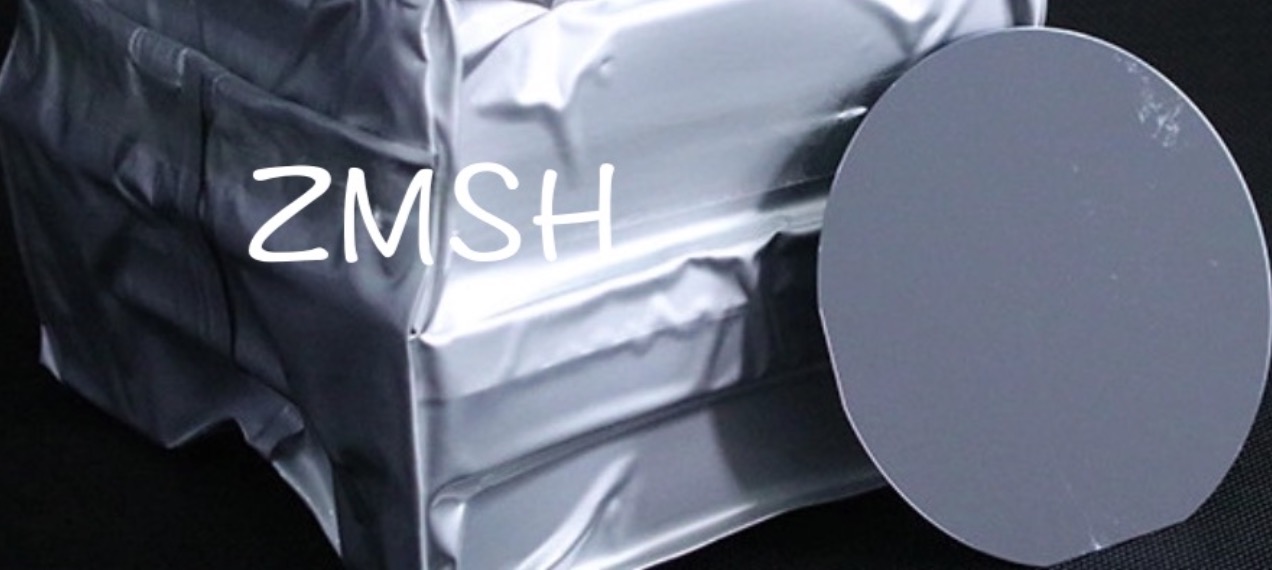2'' 4'' InP Wafer Indium Phosphide Wafer Semiconductor
Substrates 350um 650um
Description of InP wafer:
InP (Indium phosphide) chips are a commonly used semiconductor
material for the manufacture of high-performance optoelectronic
devices such as photodiodes, lasers and photoelectric sensors.
- Crystal structure: InP chips adopt a cubic crystal structure with a
highly ordered lattice structure.
- Energy gap: InP chips have a small direct energy gap of about 1.35
eV, which is a semiconductor material in the visible light range.
- Refractive index: The refractive index of an InP wafer varies with
the wavelength of light and is about 3.17 in the visible range.
- Thermal conductivity: InP has a high thermal conductivity of about
0.74 W/(cm·K).
- Electron mobility: InP chips have a high electron mobility of about
5000 cm^2/(V·s).
- Chip size: InP chips are usually supplied in round chip form and
can range in diameter from a few millimeters to several inches.
- Surface characteristics: The surface of the InP chip is usually
specially treated to improve its flatness and cleanliness.
Features of InP wafer:
InP (Indium phosphide) chip is widely used in the field of
optoelectronic devices as the substrate material of semiconductor
devices. Here are some of the advantages of InP chip substrate
materials:
- Direct energy gap: InP chips have a small direct energy gap (about
1.35 eV), allowing them to efficiently absorb and emit light
signals in the visible range.
- High electron mobility: InP chips have a high electron mobility
(approximately 5000 cm^2/(V·s)), making them exhibit excellent
electrical properties in high-speed electronic devices.
- Strong photoelectric effect: InP chips have a strong photoelectric
effect, making them exhibit excellent performance in devices such
as photodetectors and photodiodes.
- Stability and reliability: InP chips have good thermal stability
and electrical properties, enabling them to work in high
temperature and high electric field environments.
- Extensive preparation techniques: InP wafers can be grown by a
variety of preparation techniques, such as metal-organic chemical
vapor deposition (MOCVD) and molecular beam epitaxy (MBE).
Technical Parameters of InP wafer:
| Item | Parameter | UOM |
| Material | InP | |
| Conduction type/Dopant | S-C-N/S | |
| Grade | Dummy | |
| Diameter | 100.0+/-0.3 | mm |
| Orientation | (100) +/-0.5° | |
| Lamellar twin area | useful single crystal area with (100) orienation > 80% | |
| Primary Flat Orientation | EJ(0-1-1) | mm |
| Primary Flat Length | 32.5+/-1 | |
| Secondary Flat Orientation | EJ(0-11) | |
| Secondary Flat Length | 18+/-1 | |
Applications of InP wafer:
InP (Indium phosphide) chip, as the substrate material of
semiconductor devices, has excellent photoelectric and electrical
properties. The following are some of the main application areas of
InP chip substrate materials:
- Optical communication: It can be used to manufacture light
transmitters (such as lasers) and light receivers (such as
photodiodes) in fiber optic communication systems.
- Optical detection and sensing: Photodetectors based on InP chips
can efficiently convert optical signals into electrical signals for
optical communication, optical measurement, spectral analysis and
other applications.
- Laser technology: INP-based lasers are widely used in optical
communication, optical storage, liDAR, medical diagnosis and
material processing.
- Optoelectronic integrated circuits: InP chips can be used to make
optoelectronic integrated circuits (OEics), which is the
integration of optoelectronic devices and electronic devices on the
same chip.
- Solar cells: InP chips have a high photoelectric conversion
efficiency, so they can be used to manufacture efficient solar
cells.

FAQ:
Q1: What brand name is the InP wafer?
A1: The Indium Phosphide is made by ZMSH.
Q2: What's the diameter of the Indium Phosphide?
A2: Thediameter of Indium Phosphide is 2'', 3'', 4''.
Q3: Where is the Indium Phosphide from?
A3: The Indium Phosphide is from China.
Q4: Is the Indium Phosphide ROHS certified?
A4: Yes, the Indium Phosphide is ROHS certified.
Q5: How many Indium Phosphide wafes can I buy at 1 time?
A5: The minimum order quantity of the Indium Phosphide is 5pcs.
Other products:
Silicon wafers


